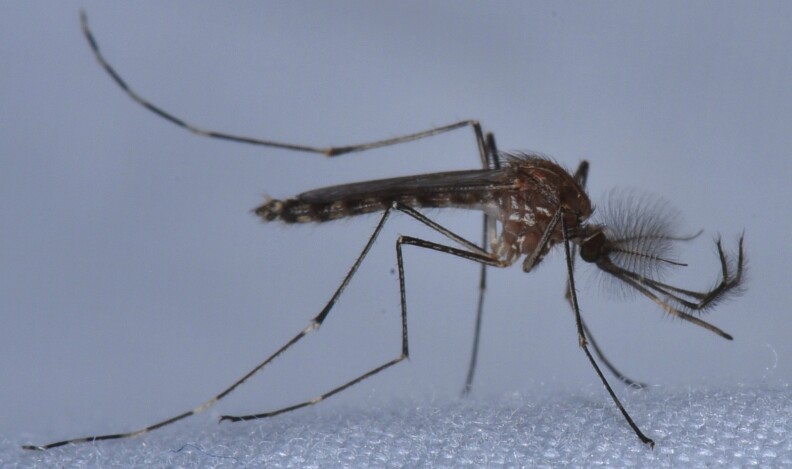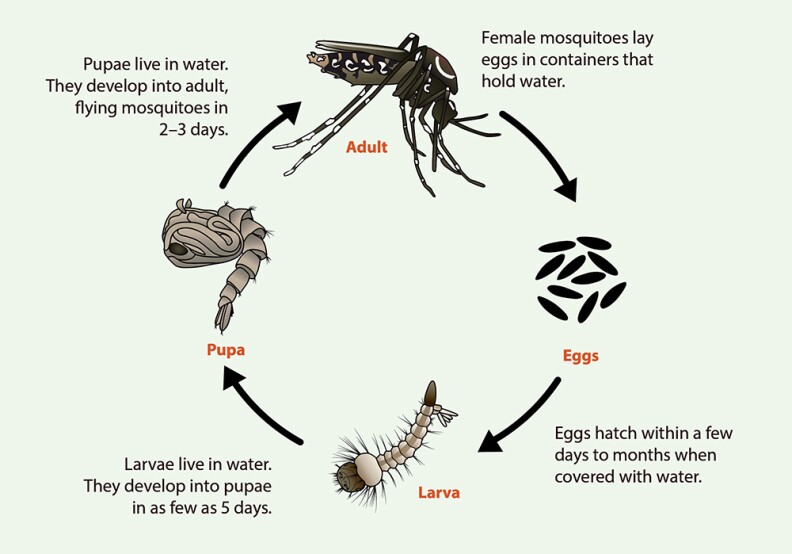It’s hot, you want to hang outside. And then you do, and you’re scratching all night. Welcome to the height of mosquito season — with an extra boost this year from all that rain we had.
We talked to Steve Vetrone, the director of scientific technical services for the Greater Los Angeles County Vector Control District, to find out what the 2023 season is looking like so far.
His district largely covers the San Fernando Valley and southeast L.A. County, and is part of a network of five districts that monitor and measure the county's mosquito activity. While it’s just one of the districts, it’s a good indicator of what’s happening elsewhere.
Vetrone says this year, his district is seeing high numbers of "mosquito abundance" — which refers to how many mosquitoes have been counted in their traps overall.
-
Nonprofit's launching fundraiser to keep it afloat
-
USC study documents what residents want from trees
-
What candidates can — and can't — say they do
"We have been really trying to identify where these mosquitoes might be coming from in these specific areas," Vetrone said. "But it is definitely higher than what we've seen last year for sure."
The abundance is more than the district's five-year average, Vetrone says, with hot spots in the western end of the San Fernando Valley and southern side of L.A. city. West Nile activity, however, is lower there than previous years.
Mosquito season can show up and affect districts differently every year. For example, the San Gabriel Valley district is getting more positive West Nile samples in mosquitoes in 2023 than other districts. Here's how many positives have been identified this year so far, with data available as of July 31:
- Antelope Valley Mosquito & Vector Control District: 0
- Compton Creek Mosquito Abatement District: 0
- Los Angeles County West Vector Control District: 1
- Greater Los Angeles County Vector Control District: 11
- San Gabriel Valley Mosquito & Vector Control District: 52
See mosquito activity near you
What species of mosquitoes are in our region?
There are two main types:
- The native Culex mosquito, which can transmit the West Nile virus.
- The invasive Aedes aegypti mosquito, which originated in Africa. (Aedes albopictus, originating in Southeast Asia, has been less common, but it's present in multiple counties.)

They tend to show up at different times, according to Anais Medina Diaz, a spokesperson for the Greater Los Angeles County Vector Control District.
Around April through August:
Mosquitoes can show up as early as spring.
The native Culex are found most often in the early summer months, when more West Nile samples are found.
Some areas can be more active than others, such as the San Fernando Valley. In total, 357 samples were confirmed in 2022 in the Greater Los Angeles County Vector Control District.
Around September, October, November:
-
A vector is any arthropod, insect, rodent or other animal that transmits a disease to other animals or humans.
The early fall months are the peak time for Aedes mosquitoes, but as they’ve spread so too has their season. (They can also show up as early as April and linger into November). These mosquitoes are expanding more into our region because they adapt well to our increasingly hotter, drier environment.
They’re aggressive little insects that have a strong attraction to human blood, so they’ll bite people more.

What about diseases?
While rare in California, mosquitoes can also transmit other nasty viruses, like dengue, Zika, yellow fever and chikungunya viruses, according to the California Department of Public Health. We've had a very small number of dengue, Zika, and chikungunya cases in recent years, but no infections have been acquired locally.
Why Aedes mosquitoes are so pesky
Omar Akbari is an associate professor of cell and developmental biology at UC San Diego. He says the Aedes species are becoming predominant, which means becoming the main type of mosquito. The problem: they’re more difficult to get rid of.
“The tools we have to control them, the insecticides and the larvicides, they do work,” Akbari said. “But these mosquitoes, they can breathe in little small containers — a little bottle cap. They can lay their eggs, and their eggs can completely [dry] out and sit there for an entire year. And then when it rains, they just kind of hatch out.”
The region’s drought-related water restrictions probably worked in our favor last year. Less water likely meant fewer mosquitoes hatching, according to Diaz. But with water restrictions easing — after our onslaught of rain in 2023 — mosquitoes could be very active this year.
How to get rid of them

“Mosquito control is a shared responsibility,” Diaz said. Your plan to make your home mosquito-free is only as good as what your neighbor does.
You can be very proactive but unless everyone around you is doing the same thing, your “neighborhood is not going to find relief," she said.
There are multiple things you can do, but bear in mind that you’ll want to get people nearby involved.
Clear standing water. A DIY approach to getting rid of mosquitoes can be quite effective. A lot of the water sources that mosquitoes thrive off of are generated by us — think standing water from a dripping spigot, or water left outside for your pets. You can reduce mosquitoes in your area by cleaning up clogged rain gutters, drying out buckets, and keeping fresh water in bird baths or pet dishes.
The Greater L.A. County Vector Control District has a checklist that you can use to check your property for prime mosquito breeding spots, like kiddie pools and plant pots.
Use insect repellent. You’ll want to look for ones with these active ingredients, according to the district:
- Deet
- Picaridin
- Oil of Lemon Eucalyptus/PMD
- IR3535
“Just like we wear sunscreen, we should wear insect repellent when we're outdoors to protect ourselves from not just the bites, but also the viruses that they can transmit,” Diaz said.
Call in the experts: If the mosquitoes where you live won’t take the hint, call your local vector control district. They can catalog, remove, and document the spread — at no cost.








